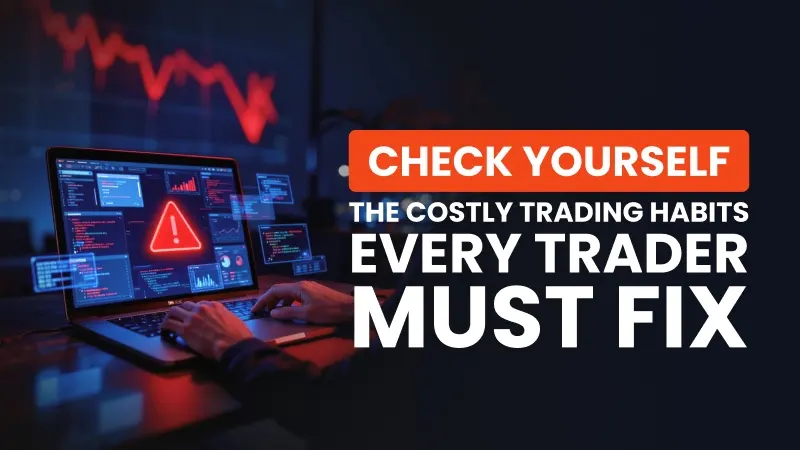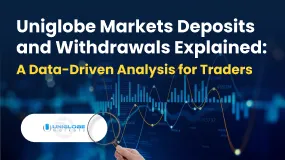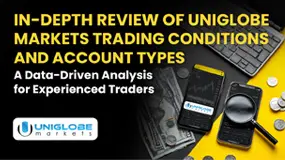简体中文
繁體中文
English
Pусский
日本語
ภาษาไทย
Tiếng Việt
Bahasa Indonesia
Español
हिन्दी
Filippiiniläinen
Français
Deutsch
Português
Türkçe
한국어
العربية
Market Structure Forex: Key Trading Components & Phases Every Trader Should Know
Abstract:Want to win forex trades? Be knowledgeable about market structure, its components, phases and more. The concept of market structure forex, where prices are arranged across time within chart data, helps traders determine trends, directions, necessary price levels, and potential trading avenues. It also helps traders comprehend historical price patterns concerning various currency pairs. Read on to learn more about the market structure.

Want to win forex trades? Be knowledgeable about market structure, its components, phases and more. The concept of market structure forex, where prices are arranged across time within chart data, helps traders determine trends, directions, necessary price levels, and potential trading avenues. It also helps traders comprehend historical price patterns concerning various currency pairs. Analyzing historical forex patterns helps traders estimate future price movements. In this article, we have prepared an in-depth guide on market structure forex. Read it to implement a winning forex trading strategy.
Lets Start with Key Market Structure Forex Components
Price Action
Price action reflects currency pair movements without relying on indicators. With a price action trading strategy, the market responds effectively to economic events, trader sentiment, and supply/demand dynamics. Three types of trends usually emerge - uptrend, downtrend, and range-bound. Uptrend is demonstrated through higher highs and higher lows, while the downward trend demonstrates lower lows and lower highs. The range-bound trading shows prices within a horizontal range without indicating any specific direction.
Support and Resistance
Price support levels emerge where market demand prevents further drops. Whereas the price resistance emerges where supply forces prevent further upward movement.
Swing Highs and Lows
Forex charts include crucial turning points that highlight changes in price direction. The market causes a swing high or swing low when prices are downward after going upward and vice versa. These turning points help identify trend direction and potential market entry and exit points for the trader.
Key Market Structure Forex Phases
The forex market undergoes recurring stages that help form the basis on which prices move. Identifying these market phases helps traders ascertain their existing market position and estimate future developments. The four key forex market phases are - Accumulation Phase, Uptrend, Distribution Phase, and Downtrend.
Accumulation Phase
The accumulation phase marks the beginning of the forex market cycle after a downtrend, as it starts stabilizing. However, the general market does not know about it. Prices move within a range without any clear trend. Usually, this phase indicates a potential upcoming uptrend.
Uptrend
During this phase, the forex market starts rising and a bullish trend emerges. The forex chart thus displays both rising highs and rising lows. This trend demonstrates increased control for buyers with demand numbers outweighing those of supply. As the market rises, traders are presented with favorable asset buying cues.
Distribution Phase
After a powerful uptrend, the market witnesses a distribution phase wherein large investors start selling to book profits, albeit slowly, to avoid a collapse. Here also, the price movement remains sideways, creating a range at the top. This phase usually signals the losing strength of the ongoing uptrend before a potential market reversal.
Downtrend
Following the distribution phase, the market undergoes a downtrend as it breaks down and starts trending lower. Bearish characteristics are displayed through its lower highs and lower lows, indicating control for sellers and supply exceeding demand. As the market moves in the opposite direction of an uptrend, it creates short-selling and position exit opportunities.
Conclusion
Understanding market structure in forex is critical for forex traders. By identifying price action, support and resistance, swing highs and lows, and the different market phases, traders can navigate the market confidently. Recognizing whether the market is in accumulation, uptrend, distribution, or downtrend allows traders to enter and exit more effectively, avoid unnecessary risks, and build winning strategies.
Welcome to WikiFX Masterminds - Where You Unlock Powerful Forex Trading Strategies & Insights
Join it using these simple steps-
1. Scan the QR code placed right at the bottom.
2. Download the WikiFX Pro app.
3. Afterward, tap the ‘Scan’ icon placed at the top right corner
4. Scan the code again.
5. Great, you have become a community member.

Disclaimer:
The views in this article only represent the author's personal views, and do not constitute investment advice on this platform. This platform does not guarantee the accuracy, completeness and timeliness of the information in the article, and will not be liable for any loss caused by the use of or reliance on the information in the article.
Read more

Check Yourself: The Costly Trading Habits Every Trader Must Fix
Are the trading habits you barely notice the very ones quietly destroying your profits, and could a single overlooked mistake be costing you far more than you realise?

Scandinavian Capital Markets Exposed: Traders Cry Foul Play Over Trade Manipulation & Fund Scams
Does Scandinavian Capital Markets stipulate heavy margin requirements to keep you out of positions? Have you been deceived by their price manipulation tactic? Have you lost all your investments as the broker did not have risk management in place? Were you persuaded to bet on too risky and scam-ridden instruments by the broker officials? These are some burning issues traders face here. In this Scandinavian Capital Markets review guide, we have discussed these issues. Read on to explore them.

Uniglobe Markets Deposits and Withdrawals Explained: A Data-Driven Analysis for Traders
For any experienced trader, the integrity of a broker isn't just measured in pips and spreads; it's fundamentally defined by the reliability and transparency of its financial operations. The ability to deposit and, more importantly, withdraw capital seamlessly is the bedrock of trust between a trader and their brokerage. When this process is fraught with delays, ambiguity, or outright failure, it undermines the entire trading relationship. This in-depth analysis focuses on Uniglobe Markets, a broker that has been operational for 5-10 years and presents itself as a world-class trading partner. We will move beyond the marketing claims to scrutinize the realities of its funding mechanisms. By examining available data on Uniglobe Markets deposits and withdrawals, we aim to provide a clear, evidence-based picture for traders evaluating this broker for long-term engagement. Our investigation will be anchored primarily in verified records and user exposure reports to explain the Uniglobe Mar

In-Depth Review of Uniglobe Markets Trading Conditions and Account Types – An Analysis for Traders
For experienced traders, selecting a broker is a meticulous process that extends far beyond headline spreads and bonus offers. It involves a deep dive into the fundamental structure of a broker's offering: its regulatory standing, the integrity of its trading conditions, and the flexibility of its account types. Uniglobe Markets, a broker with an operational history spanning over five years, presents a complex case study. It offers seemingly attractive conditions, including high leverage and a diverse account structure, yet operates within a regulatory framework that demands intense scrutiny. This in-depth analysis will dissect the Uniglobe Markets trading conditions and account types, using data primarily sourced from the global broker inquiry platform, WikiFX. We will explore the Uniglobe Markets minimum deposit, leverage, and account types to provide a clear, data-driven perspective for traders evaluating this broker as a potential long-term partner.
WikiFX Broker
Latest News
Gratitude Beyond Borders: WikiFX Thank You This Thanksgiving
MH Markets Commission Fees and Spreads Analysis: A Data-Driven Breakdown for Traders
Alpha FX Allegations: Traders Claim Account Blocks, Withdrawal Denials and Security Breaches
How to Become a Profitable Forex Trader in Pakistan in 2025
CFTC Polymarket Approval Signals U.S. Relaunch 2025
Zipphy Exposed: No Valid Regulation, Risk Warning
KEY TO MARKETS Review: Are Traders Facing Withdrawal Delays, Deposit Issues & Trade Manipulation?
FCA Consumer Warning – FCA Warning List 2025
Australia’s Fraud-Intel Network Exposes $60M in Scams
RM104.9 Million Gone: Why Hundreds Are Demanding a Full MACC Investigation
Currency Calculator



